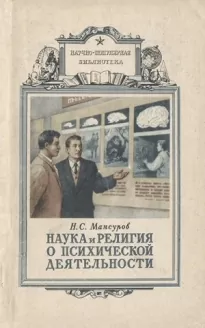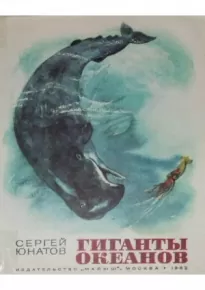Библиография
Abrams, D., and M. A. Hogg. 1990. Social identity theory: Constructive and critical advances. New York: Springer-Verlag.
Abrams, D., and M. A. Hogg, eds. 1999. Social identity and social cognition: An introduction. Malden, Mass.: Blackwell.
Alcoholics anonymous. 1976. 3d ed. New York: Alcoholics Anonymous World Services.
Alexander, R. D. 1979. Darwinism and human affairs. Seattle: University of Washington Press.
Alexander, R. D. 1987. The biology of moral systems. New York: Aldine de Gruyter.
Allen, N. J., W. S. F. Pickering, and W. W. Miller, eds. 1998. On Durkheim’s “Elementary forms of religious life.” London: Routledge.
Almann, J. M. 1999. Evolving brains. New York: Scientific American Library.
Axelrod, R. 1980a. Effective choices in the prisoner’s dilemma. Journal of Conflict Resolution 24:3–25.
Axelrod, R. 1980b. More effective choices in the Prisoner’s Dilemma. Journal of Conflict Resolution 24:379–403.
Axelrod, R. 1984. The evolution of cooperation. New York: Basic Books.
Axelrod, R., and W. D. Hamilton. 1981. The evolution of cooperation. Science 211:1390–1396.
Barkow, J. H., L. Cosmides, and J. Tooby, eds. 1992. The adapted mind: Evolutionary psychology and the generation of culture. Oxford: Oxford University Press.
Blackmore, S. 1999. The meme machine. Oxford: Oxford University Press.
Blurton Jones, N. 1984. A selfish origin for human food sharing: Tolerated theft. Ethology and Sociobiology 5:1–3.
Blurton Jones, N. 1987. Tolerated theft: Suggestions about the ecology and evolution of sharing, hoarding and scrounging. Social Science Information 26:31–54.
Boak, A. E. R. 1955. Manpower shortage and the fall of the Roman Empire in the West. Ann Arbor: University of Michigan Press.
Boehm, C. 1978. Rational preselection from Hamadryas to Homo Sapiens: The place of decisions in adaptive process. American Anthropologist 80:265–296.
Boehm, C. 1983. Montenegrin social organization and values: Political ethnography of a refuge area tribal adaptation. New York: AMS press.
Boehm, C. 1984. Blood revenge. Philadelphia: University of Pennsylvania Press.
Boehm, C. 1993. Egalitarian society and reverse dominance hierarchy. Current Anthropology 34:227–254.
Boehm, C. 1996. Emergency decisions, cultural selection mechanics and group selection. Current Anthropology 37:763–793.
Boehm, C. 1999. Hierarchy in the forest: Egalitarianism and the evolution of human altruism. Cambridge, Mass: Harvard University Press.
Boerlijst, M. C., M. A. Nowak, and K. Sigmund. 1997. The logic of contrition. Journal of Theoretical Biology 185:281–293.
Bowles, S., and H. Gintis. 1998. Is equality passe? Boston Review 23, no. 6:4–26.
Boyd, R. 1989. Mistakes allow evolutionary stability in the repeated prisoner’s dilemma game. Journal of Theoretical Biology 136:47–56.
Boyd, R., and P. J. Richerson. 1985. Culture and the evolutionary process. Chicago: University of Chicago Press.
Boyd, R., and P. J. Richerson. 1989. The evolution of indirect reciprocity. Social Networks 11:213–236.
Boyd, R., and P. J. Richerson. 1992. Punishment allows the evolution of cooperation (or anything else) in sizable groups. Ethology and Sociobiology 13:171–195.
Boyer, P. 1994. The naturalness of religious ideas: A cognitive theory of religion. Berkeley: University of California Press.
Boyer, P. 2001. Religion explained. New York: Basic Books. Bradie, M. 1986. Assessing evolutionary epistemology. Biology and Philosophy 1:401–460.
Bradley, D. E. 1995. Religious involvement and social resources: Evidence from the data set “Americans’ Changing Lives.” Journal for the Scientific Study of Religion 34:259–267.
Buckser, A. 1995. Religion and the supernatural on a Danish island: Rewards, compensators, and the meaning of religion. Journal for the scientific study of religion 34:1–16.
Burkert, W. 1996. Creation of the sacred: Tracks of biology in early religions. Cambridge, Mass.: Harvard University Press.
Burn, A. R. 1953. Hic breve vivitur. Past and Present 4:2–31.
Buss, D. M. 1994. The evolution of desire: Strategies of human mating. New York: Basic Books.
Buss, D. M. 1999. Evolutionary psychology: New science of the mind. Boston: Allyn and Bacon.
Butler, J. [1726] 1950. Five sermons. Indianapolis: Bobbs-Merrill.
Campbell, D. T. 1960. Blind variation and selective retention in creative thought and other knowledge processes. Psychological Review 67:380–400.
Cartwright, J. 2000. Evolution and human behavior. Cambridge, Mass.: MIT Press.
Cavalli-Sforza, L. L., and D. Carmelli. 1977. The Ashkenazi gene pool: Interpretations. In Genetic diseases among Ashkenazi Jews, ed. R. M. Goodman and A. G. Motulsky. New York: Raven Press.
Cavalli-Sforza, L. L., and M. W. Feldman. 1981. Cultural transmission and evolution. Princeton, N.J.: Princeton University Press.
Chisholm, J. S. 1999. Death, hope, and sex. Cambridge: Cambridge University Press.
Cialdini, R. B., and M. R. Trost. 1998. Social influence: Social norms, conformity, and compliance. In Handbook of social psychology, ed. D. T. Gilbert and S. T. Fiske, 151–192. New York: McGraw Hill.
Cohan, F. M. 1984. Can uniform selection retard random genetic divergence between isolated conspecific populations? Evolution 38:495–504.
Cohen, G. A. [1978] 1994. Karl Marx’s theory of history: A defense. Princeton: Princeton University Press. Страницы 278–296 перепечатаны в издании: Martin and McIntyre 1994, 391–402.
Cohn, N. 1966. Warrant for genocide: The Jewish world conspiracy and the “Protocols of the Elders of Zion.” New York: Harper and Row.
Collcutt, M. 1981. Five mountains: The Rinzai Zen monastic tradition in Medieval Japan. Cambridge, Mass.: Harvard University Press.
Collins, R. W. 1968. Calvin and the libertines of Geneva. Toronto: Clarke, Irwin, and Co.
Cosmides, L., and J. Tooby. 1992. Cognitive adaptations for social exchange. In The adapted mind: Evolutionary psychology and the generation of culture, ed. J. Barkow, L. Cosmides, and J. Tooby, 163–225. New York: Academic Press.
Cosmides, L., and J. Tooby. 2001. What is evolutionary psychology? Explaining the new science of the mind. New Haven: Yale University Press.
Coyne, J. A., N. H. Barton, and M. Turelli. 1997. A critique of Sewall Wright’s shifting balance theory of evolution. Evolution 51:6643–6671.
Coyne, J. A., N. H. Barton, and M. Turelli. 2000. Is Wright’s shifting balance theory important in evolution? Evolution 54:306–317.
Csikszentmihalyi, M. 1990. Flow: The psychology of optimal experience. New York: Harper and Row.
Cummins, D. D., ed. 1998. The evolution of mind. Oxford: Oxford University Press.
Daly, M., and M. Wilson. 1988. Homicide. New York: Aldine de Gruyter.
Damasio, A. R. 1994. Descartes’ Error. New York: Avon.
Darwin, C. 1871. The descent of man and selection in relation to sex. New York: Appleton.
Darwin, C. [1887] 1958. The autobiography of Charles Darwin, 1809–1882. With original omissions restored. Edited by Nora Barlow. New York: Harcourt Brace.
Dawkins, R. 1976. The selfish gene. 1st ed. Oxford: Oxford University Press.
Dawkins, R. 1982. The extended phenotype. Oxford: Oxford University Press.
Dawkins, R. 1998. The emptiness of theology. Free Inquiry 18:6.
Dawkins, R., and J. R. Krebs. 1978. Animal signals: Information or manipulation? In Behavioral ecology: An evolutionary approach, ed. J. R. Krebs and N. B. Davis, 282–309. Oxford: Blackwell.
Deacon, T. W. 1998. The symbolic species. New York: Norton.
Dennett, D. C. 1981. Brainstorms. Cambridge, Mass: MIT Press, Bradford Books.
Depew, D. J., and B. H. Weber. 1995. Darwinism evolving. Cambridge, Mass: MIT Press.
Detrain, C., J. L. Deneubourg, and J. M. Pasteels, eds. 1999. Information processing in social insects. Basel: Birkhauser.
Dobzhansky, T. 1973. Nothing in biology makes sense except in the light of evolution. American Biology Teacher 35:125–129.
Du Chaillu, P. B. 1868. Explorations and adventures in equatorial Africa. New York: Harper.
Dugatkin, L. A. 1997. Cooperation among animals. Oxford: Oxford University Press.
Dugatkin, L. A. 1999. Cheating monkeys and citizen bees. New York: Free Press.
Dugatkin, L. A., ed. 1998. Game theory and animal behavior. Oxford: Oxford University Press.
Dugatkin, L. A., and M. Alfieri. 1991a. Tit-for-Tat in guppies (Poecilia reticulata): The relative nature of cooperation and defection during predator inspection. Evolutionary Ecology 5:300–309.
Dugatkin, L. A. 1991b. Guppies and the tit for tat strategy: preference based on past interaction. Behavioral Ecology and Socio-biology 28:243–246.
Dunbar, R. I. M. 1996. Grooming, gossip, and the evolution of language. Cambridge, Mass: Harvard University Press.
Dunbar, R. I. M., C. Knight, and C. Power, eds. 1999. The evolution of culture. New Brunswick, N.J.: Rutgers University Press.
Durham, M. E. 1928. Some tribal origins, laws, and customs of the Balkans. London: George Allen and Unwin.
Durham, W. H. 1991. Coevolution: Genes, culture, and human diversity. Stanford: Stanford University Press.
Durkheim, E. [1912] 1995. The elementary forms of religious life. Translated by Karen E. Fields. New York: The Free Press.
Edelman, G. M. 1988. Neural Darwinism: The theory of neuronal group selection. New York: Basic Books.
Edelman, G. M., and G. Tonomi. 2001. A universe of consciousness: How matter becomes imagination. New York: Basic Books.
Ehrenpreis, A. [1650] 1978. An epistle on brotherly community as the highest command of love. In Brotherly community – the highest command of love: Two Anabaptist documents of 1650 and 1560, by Andreas Ehrenpreis and Claus Felbinger, ed. Robert Friedmann, 9–77. Rifton, N.Y.: Plough Publishing Co.
Eliade, M., ed. 1987. The encyclopedia of world religions. New York: Macmillan.
Ellickson, R. C. 1991. Order without law. Cambridge, Mass: Harvard University Press.
Ellison, C. G., and L. K. George. 1994. Religious involvement, social ties, and social support in a southeastern community. Journal for the Scientific Study of Religion 33:46–61.
Elster, J. 1983. Explaining technical change. Cambridge: Cambridge University Press.
Emlen, S. 1975. Migration: Orientation and navigation. In Avian Biology, ed. D. Farner and J. King, 129–219. New York: Academic Press.
Endler, J. A. 1986. Natural selection in the wild. Princeton: Princeton University Press.
Endler, J. A. 1995. Multiple-trait coevolution and environmental gradients in guppies. Trends in Ecology and Evolution 10:22–29.
Evans-Pritchard, E. E. 1940. The Nuer: A description of the modes of livelihood and political institutions of a Nilotic people. Oxford: Oxford University Press.
Evans-Pritchard, E. E. 1956. Nuer religion. Oxford: Oxford University Press.
Evans-Pritchard, E. E. 1965. Theories of primitive religion. Oxford: Clarendon Press.
Faia, M. A. 1986. Dynamic functionalism. Cambridge: Cambridge University Press.
Finke, R., and R. Stark. 1992. The churching of America, 1776–1990. New Brunswick, N.J.: Rutgers University Press.
Finkelstein, L. 1924. Jewish self-government in the Middle Ages. Westport, Conn.: Greenwood Press.
Fischer, D. H. 1989. Albion’s seed: Four British folkways in America. New York: Oxford University Press.
Frank, R. H. 1988. Passions within reason. New York: W. W. Norton.
Frank, S. A. 1998. Foundations of social evolution. Princeton: Princeton University Press.
Frazer, J. G. 1890. The golden bough. London and New York: Macmillan.
Fukuyama, F. 1995. Trust. New York: The Free Press.
Gadagkar, R. 1997. Survival strategies. Cambridge, Mass: Harvard University Press.
Gaulin, S. J. C., and D. H. McBurney. 2001. Psychology: An evolutionary approach. Upper Saddle River, N.J.: Prentice Hall.
Gigerenzer, G., and U. Hoffrage. 1995. How to improve Bayesian reasoning without instruction. Psychological Review 102:684–704.
Godin, J.-G., and L. A. Dugatkin. 1996. Female mating preference for bold males in the guppy. Proceedings of the National Academy of Sciences, USA 93:10262–10267.
Goodenough, U. 1998. The sacred depths of nature. Oxford: Oxford University Press.
Gould, S. J. 1989. Wonderful life. New York: W. W. Norton.
Gould, S. J. 1999. Rock of ages: Science and religion in the fullness of life. New York: Ballantine.
Gould, S. J., and R. C. Lewontin. 1979. The spandrels of San Marco and the Panglossian paradigm: A critique of the adaptationist program. Proceedings of the Royal Society of London, Series B, Biological Sciences 205:581–598.
Guthrie, S. E. 1995. Faces in the clouds: A new theory of religion. Oxford: Oxford University Press.
Hamilton, W. D. 1964. The genetical evolution of social behavior: I and II. Journal of Theoretical Biology 7:1–52.
Hamilton, W. D. 1975. Innate social aptitudes in man: An approach from evolutionary genetics. In Biosocial anthropology, ed. R. Fox, 133–53. London: Malaby Press.
Hamilton, W. D. 1996. The narrow roads of gene land. Oxford: W. H. Freeman/Spektrum.
Hammer, M. F., A. J. Redd, E. T. Wood, M. R. Bonner, H. Jaranazi, T. Korafet, S. Sanachiora-Benerocetti, A. Oppenheim, M. A. Jobling, J. Jenkins, H. Ostrer, and B. Bonnie-Tamir. 2000. Jewish and Middle Eastern non-Jewish populations share a common pool of Y-chromosome biallelic haplotypes. Proceedings of the National Academy of Sciences, USA 97:6769–6774.
Hart, K. E. 1999. A spiritual interpretation of the 12-steps of Alcoholics Anonymous: From resentment to forgiveness to love. Journal of Ministry in Addiction and Recovery 6:25–39.
Hartung, J. 1995a. Love thy neighbor: The anatomy of in-group morality. Skeptic 3 (November): 86–99.
Hartung, J. 1995b. Review of “A people that shall dwell alone: Judaism as a group evolutionary strategy.” Ethology and Sociobiology 16:335–342.
Harvey, W. [1628] 1995. The anatomical exercises. New York: Dover.
Hauser, M., and S. Carey. 1998. Building a cognitive creature from a set of primitives: Evolutionary and developmental insights. In The evolution of mind, ed. D. D. Cummins, 51–106. Oxford: Oxford University Press.
Hayek, F. 1988. The fatal conceit. London: Routledge.
Heckathorn, D. D. 1990. Collective sanctions and compliance norms: A formal theory of group-mediated social control. American Sociological Review 55:366–384.
Heckathorn, D. D. 1993. Collective action and group heterogeneity: Voluntary provision vs. selective incentives. American Sociological Review 58:329–350.
Hempel, C. G. 1959. The logic of functional analysis. In Symposium on sociological theory, ed. L. Gross. New York: Harper and Row. Reprinted in Martin and McIntyre 1994, 349–376.
Herre, E. A. 1999. Laws governing species interactions? Encouragement and caution from figs and their associates. In Levels of selection in evolution, ed. L. Keller, 209–237. Princeton: Princeton University Press.
Hesselink, I. J. 1997. Calvin’s first catechism: A commentary. Louisville, Ky.: Westminster John Knox Press.
Heyes, C., and L. Huber, eds. 2000. The evolution of cognition. Cambridge, Mass.: MIT Press.
Hinde, R. 1999. Why gods persist: A scientific approach to religion. New Brunswick, N.J.: Routledge.
Hirschi, T., and R. Stark. 1969. Hellfire and delinquency. Social Problems 17:202–213.
Hirshleifer, J. 1977. Economics from a biological viewpoint. Journal of Law and Economics 20:1–52.
Hodgson, G. M. 1993. Economics and evolution. Cambridge, England: Polity Press.
Hoge, D. R., and D. A. Roozen. 1979. Technical appendix to understanding church growth and decline, 1950–1978. Hartford, Conn.: Hartford Seminary Foundation.
Houde, A. E., and M. Hankes. 1997. Mismatch between female preference and expression of male color pattern in some guppy populations. Animal Behavior 53:353–361.
Howell, S. 1984. Society and cosmos: Chewong of peninsular Malaya. Singapore: Oxford University Press.
Hull, D. 1973. Darwin and his critics. Chicago: University of Chicago Press.
Huxley, T. 1863. Evidence as to man’s place in nature. London: Williams and Norgate.
Iannaccone, L. R. 1992. Sacrifice and stigma: Reducing free-riding in cults, communes, and other collectives. Journal of Political Economy 100:271–291.
Iannaccone, L. R. 1994. Why strict churches are strong. American Journal of Sociology 99:1180–211.
Iannaccone, L. R. 1995. Voodoo economics? Reviewing the rational choice approach to religion. Journal for the Scientific Study of Religion 34:76–89.






